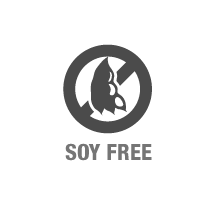Understanding And Dealing With Soy Allergy
[widget id=”ad_unit-350545256″]ad_unit-350545256[/widget]We have come to understand and learn that soybeans are a great addition to our diet because it provides a variety of benefits due to which reason many of us have made an effort to adopt it to our diets in one form or another. Unfortunately soy can also cause allergies some of which can be painful due to which reason we must try and learn how soy allergy manifests itself in order to recognize, treat and prevent it when possible.
Soy Allergy Signs And Symptoms
It has been observed that soy allergy affects mostly infants and they also usually grow out of it by the age of 3 or 4; in rare cases this type of allergy affects adults as well. Common symptoms of soy allergies are: eczema and acne like rashes on the skin, nasal congestion, asthma, swelling, canker sores, fever blisters, hay fever, low blood pressure, itching, breathing problems, fatigue, vomiting, diarrhea and in some severe cases anaphylaxis.
Treating Soy Allergy
Depending on the reaction you may need to rush to an emergency room if your respiratory passages are closing up and you may not be able to breath or you can consult a doctor for the mild reactions who will provide you with drugs to administer orally as well as a variety of creams to apply locally on the skin rashes.
Preventing Soy Allergy
One of the only ways to prevent soy allergy is to ensure it is not present in any of your food items by reading carefully the labels. Today soy is being integrated in a variety of food items because of its various benefits and even in many beverages therefore you need to be extra careful and even pay attention to the food intake when in restaurants and/or fast food centers.
Helpful Tips
Soy allergy is not very common however, it can occur at any time and it can also be cured by itself at any time therefore, keep an open mind and always be on the look out for the symptoms that can save your or the life of anyone who may be having an soy allergy attack. Learn about your body and how it reacts to certain things as well as learn to read the signs and symptoms that it send you when it is not happy with a product you ate and/or applied.
To determine soy allergies you will require conducting a variety of tests with the assistance of your doctor and in severe cases you may also require to carry first aid allergy shots that you can administer in case of an unpredicted attack.
[widget id=”ad_unit-350545252″]ad_unit-350545252[/widget]
 In 1999, the U.S. Food and Drug Administration approved a health claim for soy, which states that “Diets low in saturated fat and cholesterol that include 25 grams of soy protein a day may reduce the risk of heart disease.” There are, however, a number of studies that link soy to health risks.
In 1999, the U.S. Food and Drug Administration approved a health claim for soy, which states that “Diets low in saturated fat and cholesterol that include 25 grams of soy protein a day may reduce the risk of heart disease.” There are, however, a number of studies that link soy to health risks.
Although GOFoods does use soy in some of its products including the textured vegetable protein (TVP), it also offers products that are soy free so customers can make a choice. Watch for the soy free icon if you are interested in products that do not contain soy.

